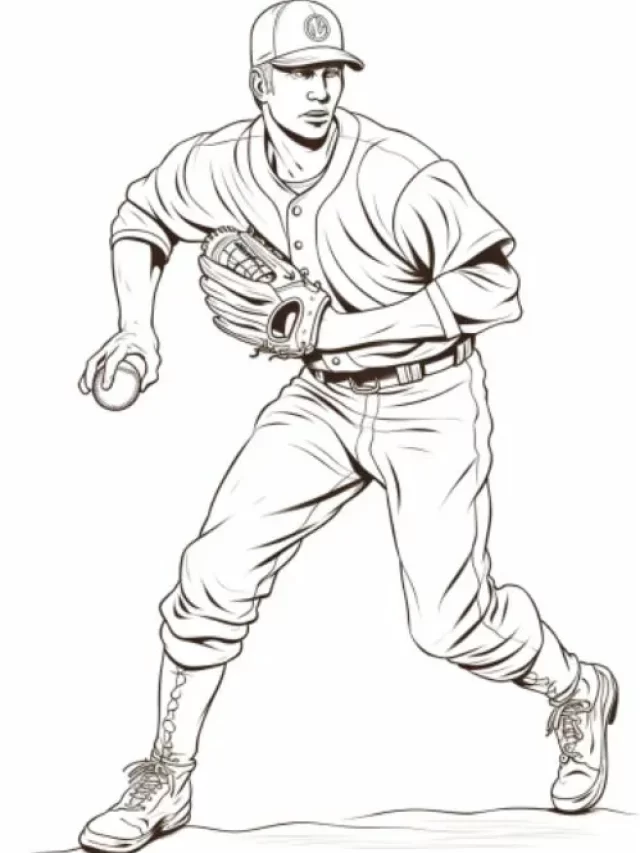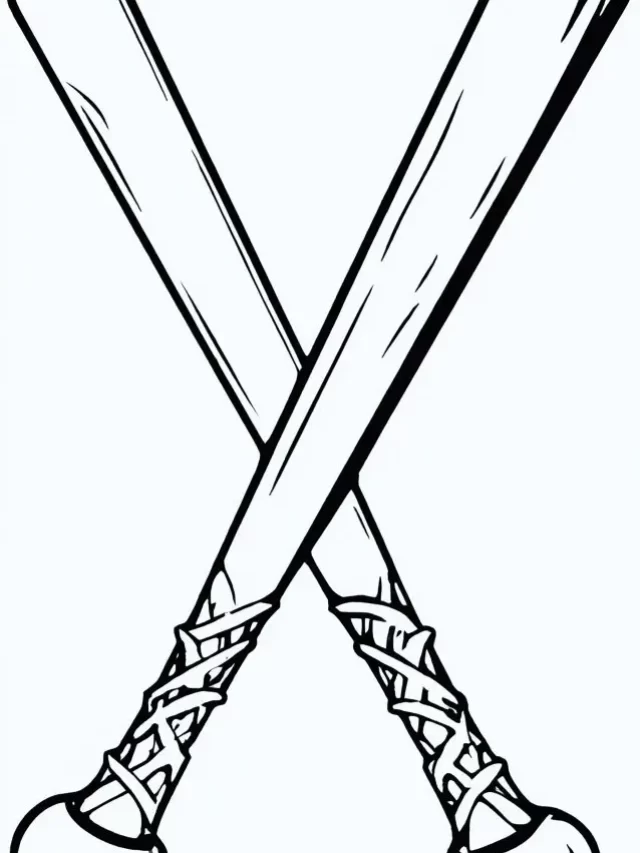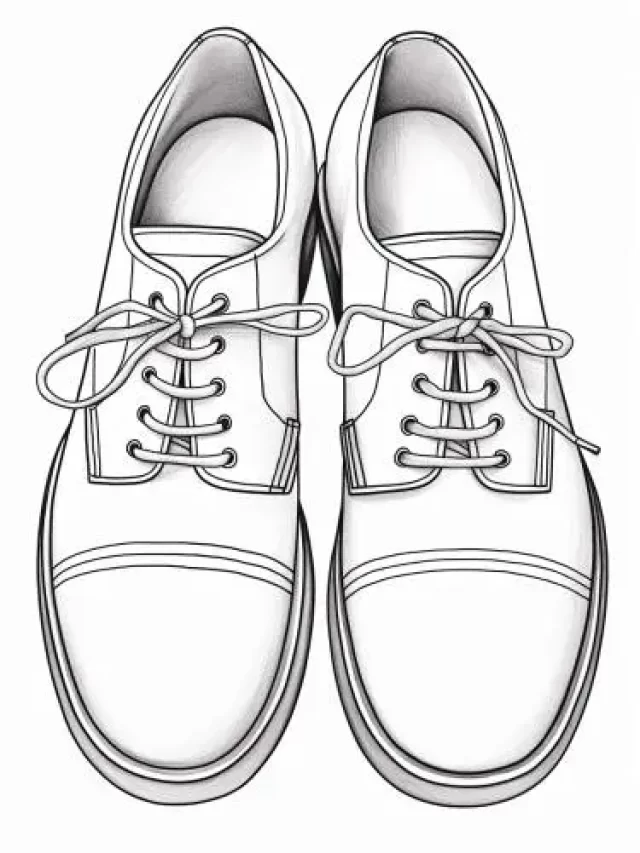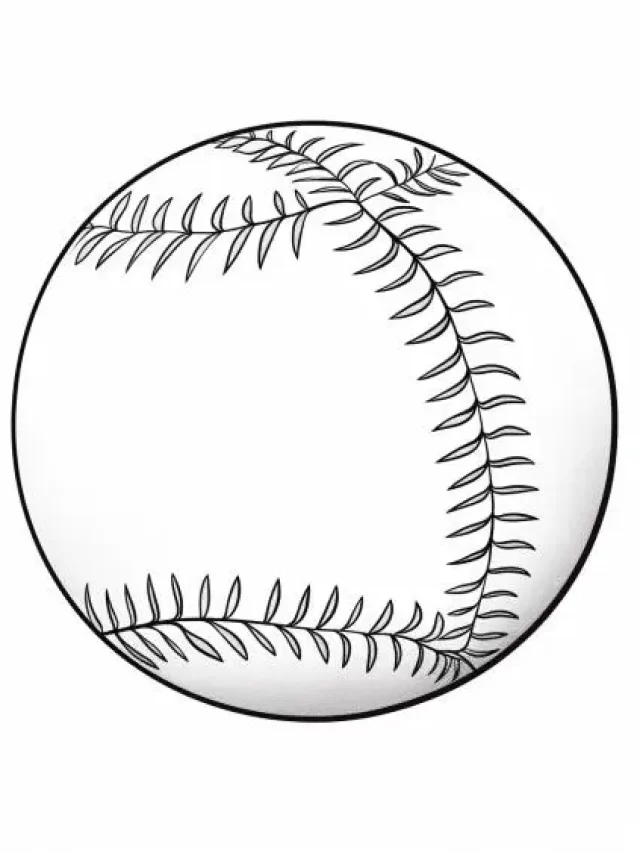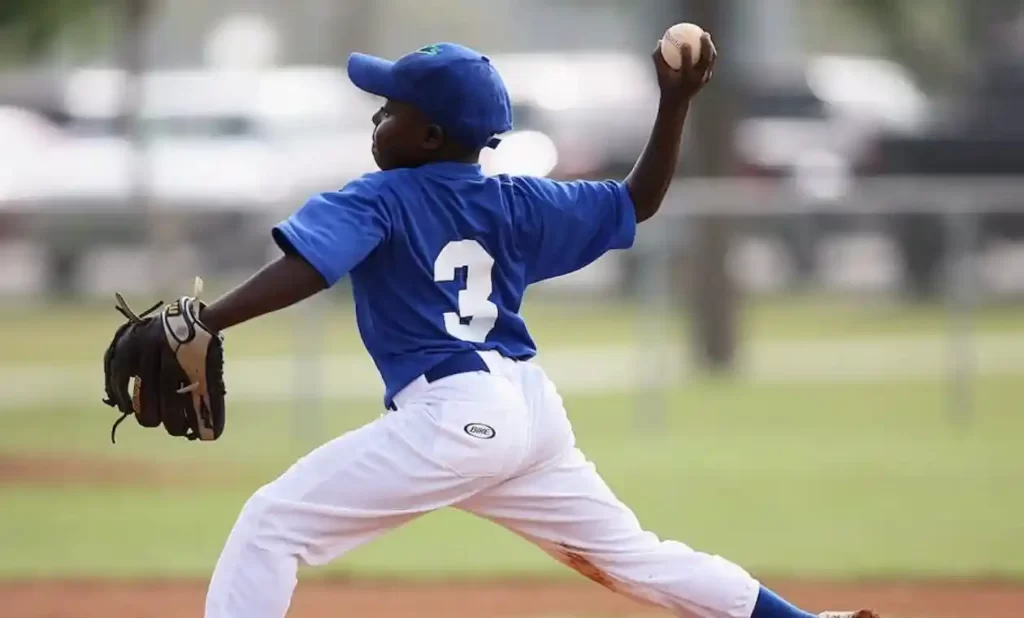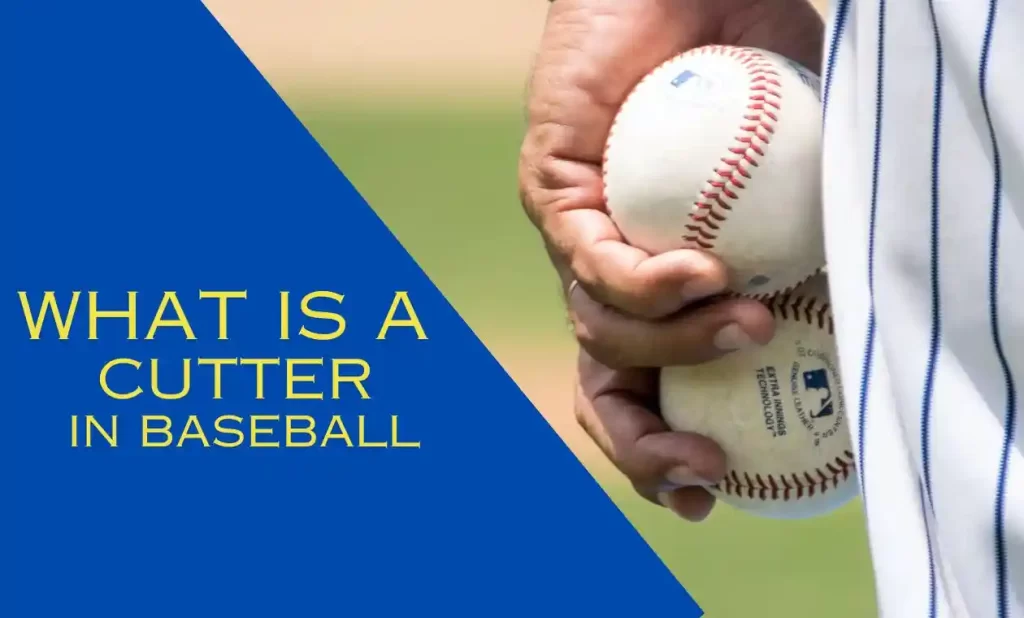
Welcome to the world of baseball, where the game isn’t just about hitting home runs and sliding into bases. It’s also about the art of pitching, and today, we’re diving into a pitch that’s as tricky as it sounds – the cutter. If you’re not quite sure what a cutter is in baseball, don’t worry; you’re in good company. We’re here to break it down into simple terms, no fancy jargon included.
Imagine you’re a pitcher, and you want to keep those batters on their toes. That’s where the cutter comes in. It’s a pitch designed to baffle hitters, making them swing and miss. But how does it work? Why is it even called a cutter? Is it like a cheese cutter, slicing through the air? Well, we’re about to find out.
In this journey, we’ll uncover the secrets of the cutter pitch – what it is, how it’s used, and why it’s a game-changer. So, grab your baseball cap and let’s start our adventure into the intriguing world of the cutter in baseball. This pitch might just become your new favorite conversation starter at the ballpark.
Also Read: What Is SLG in Baseball
What Is a Cutter in Baseball?
Let’s cut straight to the chase (pun intended). What exactly is this mysterious pitch they call the “cutter” in baseball? Well, it’s not some fancy tool you use to slice sandwiches at a baseball picnic, but it does have some cutting-edge moves.
A cutter, my friends, is a type of fastball. Imagine it as a sneaky, ninja-like pitch that surprises batters. Instead of flying straight like your typical fastball, the cutter has a secret weapon: it cuts or breaks late. No, it’s not a magic trick, but it sure feels like one when you’re facing it at the plate.
Picture a pitcher releasing the ball, and just when you think you’ve got it figured out, the ball takes a sharp turn. It’s like a plot twist in a movie – unexpected and, for batters, often frustrating.
This pitch is all about control. The pitcher wants to make it look like a regular fastball until the last moment. Then, poof! The cutter reveals its true colors, moving slightly to the side. Batters swing, thinking they’ve got it, but the ball darts away. It’s like trying to catch a firefly with your bare hands – good luck with that!
Now, you might be wondering, “Why not just throw a regular fastball?” Well, my curious friends, the cutter offers unpredictability. It’s the element of surprise that can leave batters scratching their heads and pitchers grinning.
In the next innings of our journey, we’ll dig deeper into the history of the cutter. Who came up with this genius pitch, and how did it evolve into what it is today? Stay tuned for the next episode of “Cutter Chronicles.”
History of the Cutter
Alright, folks, let’s hop into our time machine (not really) and explore the history of the cutter pitch. You might be thinking, “Who on earth thought of this pitch, and how did it end up in baseball?”
It all began a long time ago, in the baseball universe, when someone (we’d love to name them, but history isn’t always that clear) decided they needed a new trick up their pitching sleeve. Enter the cutter. Now, they might not have called it that back in the day, but the idea was the same – make that baseball move in a mysterious way.
The earliest forms of the cutter were like those first awkward steps of a baby learning to walk. Pitchers experimented with grip, release, and a dash of magic (just kidding, no magic here). They wanted to create a pitch that looked ordinary but behaved like a mischievous cat playing with a ball of yarn. It just had to have that element of surprise.
As time passed and pitchers honed their craft, the cutter became a more defined and distinct pitch. Pitchers like Sal “The Barber” Maglie and Mariano Rivera became famous for their masterful use of the cutter. It’s like they held the secret recipe for the perfect slice of baseball heaven.
Now, why did the cutter catch on like wildfire? Simply put, it works. Batters couldn’t predict where the ball was going to end up. It’s like trying to guess which way your cat will dart when you shine a laser pointer. Good luck with that!
But let’s not forget, with great power (in this case, pitching power) comes great responsibility. Pitchers needed to harness the cutter’s potential and keep it under control. After all, we’re not here to make life too easy for the batters, are we?
So, there you have it, a brief history lesson on the cutter pitch. From humble beginnings to an essential tool in a pitcher’s arsenal, it’s a pitch that’s left its mark on the game. In the next inning of our journey, we’ll explore how exactly this pitch works its magic.
How Does the Cutter Work?
All right, we’ve been teasing you with this mystical cutter pitch, but now it’s time to spill the beans. Ever wondered how this thing actually works? It’s not just a simple throw and hope for the best; there’s some science and a touch of magic involved.
Physics time, folks! The cutter is like a sneaky ninja move. Picture a pitcher gripping the baseball just right. They apply some pressure on one side, making it spin in a unique way. As it hurtles toward home plate, it’s all about that spin.
The magic happens when the ball spins just so. The cutter doesn’t give away its secret until the very last moment. That’s when it makes its grand entrance, swerving away from the batter. It’s like a plot twist in your favorite movie – unpredictable and thrilling.
You see, the spin disrupts the air around the ball, causing it to move to the side. Batters prepare for a straight fastball, but they’re in for a surprise. It’s like expecting your usual pizza delivery and getting a box of tacos instead.
Now, let’s get down to the mechanics. To throw a cutter, a pitcher uses a specific grip. It’s not your regular fastball grip; it’s like a secret handshake among pitchers. This grip helps control the spin and ensures the cutter performs its disappearing act.
But remember, it’s not all fun and games. Throwing a cutter takes practice, and pitchers need to be precise. One tiny mistake, and the ball won’t cooperate. It’s like trying to play Jenga but with a particularly tricky piece.
In the end, the cutter is a pitch that keeps batters guessing. It’s that “aha” moment when they realize the ball isn’t going where they thought. And for pitchers, it’s like having a magician’s hat full of tricks to outsmart their opponents.
So, that’s the physics and mechanics behind the cutter. A touch of spin, a dash of misdirection, and voila, you’ve got yourself one heck of a pitch. In the next inning of our journey, we’ll meet some famous pitchers known for their wicked cutter skills.
Also Read: Best Baseball Gloves by Position
Famous Practitioners
Now that we’re deep into the mysterious world of the cutter, it’s time to meet the stars of the show. These are the pitchers who’ve mastered the art of the cutter pitch, and they’ve left quite a mark on the baseball field.
- Mariano Rivera: Picture this – you’re facing Mariano Rivera in the ninth inning, and the game is on the line. What’s his secret weapon? You guessed it, the cutter. Rivera, a legend for the New York Yankees, was the ultimate master of this pitch. Batters knew it was coming, but they couldn’t touch it. It’s like knowing a magic trick and still being amazed every time.
- Roy Halladay: “Doc” Halladay, as they called him, was a magician on the mound. His cutter had batters shaking their heads in disbelief. It was like watching a magic show – one moment the ball was there, and the next, it was gone. Halladay’s precision and control with the cutter were a sight to behold.
- Greg Maddux: If there was a “Cutter Hall of Fame,” Greg Maddux would be the first inductee. His cutter was a work of art. Batters would step into the box, and before they knew it, the ball was darting away. It’s like trying to catch a firefly in a tornado. Good luck with that!
- Andy Pettitte: Andy Pettitte, known for his calm and collected demeanor, had a not-so-calm cutter. He could throw it in his sleep, and batters still couldn’t figure it out. It was like trying to predict the weather in the middle of a hurricane – a total guessing game.
These pitchers and many more added a touch of magic to the cutter pitch. They could make the ball move in ways that left batters baffled and fans cheering. It’s a pitch that’s become a part of baseball history, thanks to these legendary practitioners.
In our next inning, we’ll uncover when exactly these pitchers bring out their cutter magic on the field.
When to Use the Cutter
Ah, the million-dollar question: when should a pitcher unleash the power of the cutter? Well, hold onto your baseball cap; we’re diving into the game strategy.
- Two Strikes, You’re Out: One of the favorite moments for pitchers to whip out the cutter is when they’ve got two strikes on the batter. It’s like the pitcher’s way of saying, “You’re not getting this one.” Batters are in a tight spot; they have to swing at anything close, and that cutter? It’s anything but predictable.
- Against Lefty or Righty: The cutter is like that versatile tool you can use against both left-handed and right-handed batters. It’s a “no favorites” pitch. Lefties don’t get any special treatment here. Imagine trying to pick a favorite ice cream flavor – impossible!
- Double Play Dream: Picture this scenario – runners on base, and you need a double play. The cutter is your best friend here. It can induce those ground balls that make turning a double play a breeze. It’s like having a secret plan up your sleeve.
- Batter Troubles: If there’s a batter who’s been causing trouble, the cutter can be your go-to move. You’re basically saying, “Let’s see you hit this one.” It’s like a game of chess, and the cutter is your knight in shining armor.
- Late-Game Magic: In those nail-biting late-game situations, the cutter can be a game-changer. It can keep hitters guessing and help secure the win. It’s like pulling a rabbit out of a hat when you need it most.
So, when do you use the cutter? In these high-stakes situations, where a little unpredictability can tilt the game in your favor. But remember, it’s not just about when to use it; it’s also about how to control it. Pitchers who’ve mastered the cutter have a few tricks up their sleeves to make it dance just right.
In our next inning, we’ll explore just how to grip and throw this tricky pitch. It’s like learning a secret handshake, but with a baseball.
Also Read: How to Break in a Baseball Glove
Effectiveness and Success
Alright, let’s talk numbers and stats for a moment. We all know that in baseball, stats matter. So, just how effective is this cutter pitch, and does it really make a difference in the game?
- The Sneaky Strikeout Pitch: One of the things that makes the cutter so effective is its ability to get those all-important strikeouts. You know, when the batter swings and misses? Yeah, that’s the one. The cutter has a knack for making batters do the “swing and miss” dance. It’s like a pitcher’s secret weapon for sending batters back to the dugout.
- Ground Balls Galore: Remember those double plays we talked about earlier? Well, the cutter is often responsible for those too. It’s like the ultimate “ground ball machine.” When batters make contact, they often hit ground balls, and that’s just what the pitcher ordered.
- Keeping Batters Guessing: The cutter is all about unpredictability. It’s like the surprise ending in a movie. Batters might think they’ve got it all figured out, but the cutter changes the script. It’s that extra twist that can leave batters scratching their heads.
- Avoiding Home Runs: Home runs are exciting for fans but not so much for pitchers. The cutter has a way of keeping the ball in the park. It’s like a little insurance policy to prevent those long balls.
Now, you might be wondering about the numbers and stats. Do pitchers who use the cutter have better success rates? Well, it’s a bit like asking if a chef who uses the right spices makes better food – the answer is often yes.
The cutter has become a game-changer in baseball. It’s a pitch that adds a dash of spice to the game, keeping batters on their toes. So, if you’re a pitcher looking to up your game, the cutter might just be the trick you’re looking for.
In our next inning, we’ll delve into the nitty-gritty of how to grip and throw the cutter. It’s like revealing the secret recipe to a special dish, but with a baseball in hand.
How to Grip and Throw a Cutter
So, you’re thinking, “I want to be the magician on the mound, the master of the cutter.” Well, hold onto your baseball cap; we’re about to reveal the secret handshake of the pitching world. It’s time to learn how to grip and throw a cutter.
Step 1: Get the Right Grip
It all starts with the grip. Hold the baseball like you’re shaking hands with it, except with a twist. Place your index and middle fingers close together and slightly off-center. The thumb rests underneath the ball. It’s like making a special handshake with the baseball itself.
Step 2: Tilt and Turn
Now comes the magic touch. Tilt the ball slightly so it feels like it’s leaning against your index finger. Then, turn the ball slightly, but not too much; we’re not aiming for a full-blown magic trick here.
Step 3: Release the Kraken
As you pitch, focus on a regular fastball delivery. The secret here is the pressure on your index finger. It’s like a gentle reminder to the ball to do its thing. The cutter doesn’t reveal its secrets until the last moment, so keep it hush-hush until you release it.
Step 4: Watch the Magic Happen
The ball will start moving late, just when batters are getting ready to swing. It’s like a “ta-da” moment in a magic show. Batters are left wondering, “Where did the ball go?”
Practice, Practice, Practice
Like any magic trick, mastering the cutter takes practice. Keep working on your grip, release, and control. It’s like rehearsing your magic act to perfection.
And there you have it, the step-by-step guide to grip and throw a cutter. It’s like learning a secret handshake, but instead of a secret society, you’re joining the ranks of pitchers with a trick up their sleeves.
In the next inning of our journey, we’ll explore the variations and grip styles that pitchers use with the cutter. It’s like adding your own flair to a classic magic trick.
Variations and Grip Styles
So, you’ve got the basics down – you know how to grip and throw a cutter. But here’s the fun part: there’s more than one way to do it. It’s like jazzing up your favorite magic trick with a little extra flair. Let’s explore the variations and grip styles in the world of cutters.
The Classic Cutter Grip:
Imagine you’re sticking to the classic. The traditional cutter grip involves holding the ball with your index and middle fingers close together, and you apply a touch of pressure with your thumb. It’s like playing your favorite tune without adding any fancy notes.
The Cutter with a Twist:
Now, here’s where the magic happens. Some pitchers add a twist – literally. They slightly twist the ball as they release it. It’s like putting a spin on a classic song to make it your own.
The Soft Cutter Grip:
For those who like things a bit softer, there’s the “soft cutter.” In this version, you loosen your grip on the ball. It’s like playing a gentle melody instead of a full-blown symphony.
The Hard Cutter Grip:
On the other end of the spectrum, we have the “hard cutter.” Here, the grip is firmer, and the spin is sharper. It’s like cranking up the volume and letting everyone hear your pitch.
The Cutter Twins:
Some pitchers go all out and use both variations – the classic cutter grip and the twist. It’s like playing a duet with two instruments at the same time. Batters don’t know what hit them.
Each pitcher puts their unique spin (pun intended) on the cutter. It’s like having a special dance move that’s all your own. Whether it’s a classic, a twist, a soft touch, or a hard punch, the cutter comes in many flavors.
In the next inning of our journey, we’ll tackle some common misconceptions about the cutter. It’s like dispelling myths about your favorite magic trick.
Common Misconceptions
Oh, the world of baseball is filled with myths and misconceptions, and the cutter pitch is no exception. Let’s clear the air and separate fact from fiction.
Misconception 1: The Cutter is a Magic Bullet
Some folks think the cutter is like a magic wand that guarantees success. Well, folks, it’s a nifty trick, but it’s not foolproof. Pitchers still need skills, control, and practice to make it work. It’s like thinking a magician’s wand can cook dinner (if only!).
Misconception 2: Only Certain Pitchers Can Throw It
You might hear whispers that only a select few can master the cutter. Nonsense! Any pitcher willing to put in the effort can learn the cutter. It’s like believing only a special few can learn a card trick. Nope, anyone can do it with practice.
Misconception 3: Batters Always Figure It Out
Some say batters eventually catch on to the cutter. Well, it’s not that simple. While some batters may guess right, the cutter’s unpredictability keeps them guessing. It’s like trying to predict the weather – not always accurate.
Misconception 4: It’s Just a Slightly Different Fastball
No, it’s not just a fastball with a fancy name. The cutter has its unique spin and late-breaking movement. It’s like calling a magician’s rabbit a “slightly different bunny.” It has its charm.
Misconception 5: Every Cutter is the Same
Think all cutters are identical? Think again. Different pitchers add their unique flair to the cutter, creating variations and styles. It’s like saying all magic tricks are the same – no, each has its twist.
So, there you have it, the debunking of some common misconceptions about the cutter pitch. It’s not a magic bullet, it’s not limited to a chosen few, and it’s definitely not just a tweaked fastball. It’s a pitch that adds a touch of mystery to the game.
In the final inning of our journey, we’ll wrap things up and summarize what we’ve learned about this remarkable pitch.
In Crux
Well, folks, we’ve reached the final inning of our journey through the intriguing world of the cutter pitch in baseball. It’s time to wrap things up and recap what we’ve learned.
We discovered that the cutter isn’t just any pitch; it’s the pitch with a bit of magic up its sleeve. It’s like a magician’s favorite trick, keeping batters guessing and pitchers grinning.
We explored the science behind the cutter, how it works its late-breaking magic. It’s like revealing the magician’s secret handshake – a gentle twist, a flick, and voila!
We met the legendary pitchers who wowed us with their cutter skills. It’s like being in the front row of a magic show and witnessing the grand finale.
We uncovered when and why pitchers use the cutter, from two-strike wonders to double-play dreams. It’s like making the right moves in a game of chess.
We analyzed the effectiveness of the cutter, from strikeouts to ground balls. It’s like checking the scoreboard after an epic magic show – impressive stats.
We learned how to grip and throw the cutter, the secret handshake of pitching. It’s like learning the magician’s most prized trick.
We explored the different ways pitchers add their flair to the cutter. It’s like musicians playing the same song with their unique spin.
We addressed the misconceptions about the cutter and set the record straight. It’s like debunking myths about your favorite magic trick.
So, what’s the bottom line? The cutter is a pitch that adds flair, unpredictability, and excitement to baseball. It’s the game-changer that keeps batters guessing and pitchers in control. It’s like the grand finale of a magic show, leaving us all in awe.
As you continue your journey through the world of baseball, remember the cutter – the pitch that adds a touch of enchantment to the game. It’s not just a pitch; it’s a bit of baseball magic.
And that, my friends, is the grand conclusion of our journey. Thanks for joining us on this magical adventure through the world of the cutter in baseball.
FAQs about Cutter Pitch in Baseball
[sp_easyaccordion id=”907″]

Meet Daniel Anderson, the heart and soul behind Baseball Pro Picks. At 49, Daniel’s life has revolved around baseball, a passion that’s as strong today as it was when he first fell in love with the game. Living in the USA, Daniel has dedicated countless hours to watching, analyzing, and understanding every pitch, hit, and home run, making almost no game missed. His deep-rooted love for the sport is matched only by his commitment to sharing insightful, expert analysis with fellow baseball enthusiasts. With decades of experience and a keen eye for the game’s nuances, Daniel brings a unique perspective that enriches Baseball Pro Picks. Trust Daniel to guide you through the intricacies of baseball with the authority and trustworthiness of a true aficionado.


